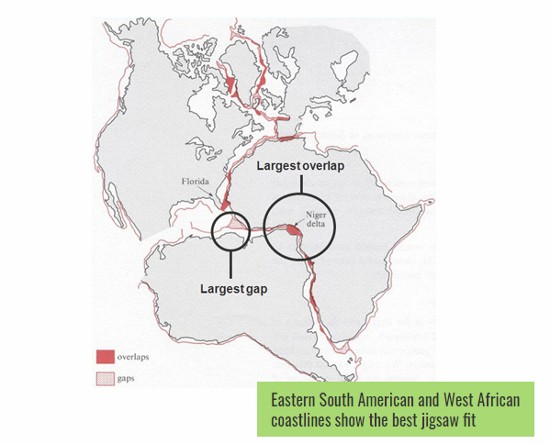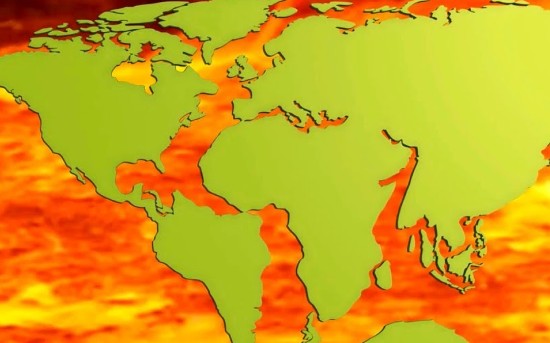Before I decided to study Medieval History and the history of Islam, my first-year university major was in the physical sciences. My interest was plate tectonics, the movement of the continents caused by the continuous slow flow of Earth’s subterranean mantle. I had been inspired by an interview I did while in high school with John Tuzo Wilson, who I invited as President of the Geography Club to speak to our students. The day he came our cafetorium (combination cafeteria and auditorium) was overfull with both faculty and students in attendance. After his speech, I stayed in touch with Professor Wilson and when I graduated entered the University of Toronto where he taught convinced I was going to follow in his footsteps and study ocean plate tectonics. But personal circumstances intervened and I ended up taking a different course of study after a year off to recover from a serious accident.
My interest, however, in Earth’s formation and the movement of its crust has never waned. So when I read the article published online on November 10, 20201 in the journal Nature, I was intrigued and thought it would be a good topic for my blog.
If you are unfamiliar with plate tectonics, the movement of Earth’s crustal plates which form not just the continents, but the oceans floor as well, was first proposed by geophysicist and meteorologist, Alfred Wegener, who in 1915 published The Origin of Continents and Oceans in which he outlined a theory he called continental drift. Wegener’s evidence could be seen on world maps. The most striking example was the coast of South America, (see illustration below) which appeared to be a jigsaw match for Africa’s Guinea Coast. What Wegener didn’t know was the underlying mechanism explaining how this all worked over geological time.

It wasn’t just the map evidence that prompted Wegener’s hypothesis. He also noted that the geomorphology (the study of the Earth’s surface features) of Eastern South America and West Africa contained the same ancient rocks and formations which appeared to date back millions of years. And yet an ocean separated the two.
The hidden mechanism would later be revealed by oceanographers and geophysicists in the mid-20th century, a geological feature first noted in the mid-19th century at the time when transoceanic cables were being laid between Europe and North America. It was the Mid-Atlantic Ridge, the longest mountain range on the planet stretching from near the North Pole (87 degrees latitude north) and running the entire length of the Atlantic Ocean to Bourvet Island located to the south of Cape Town, South Africa.
The Ridge stands as tall as 3 kilometres (1.86 miles) above the ocean floor. It consists of a series of transform faults and a rift valley running along its entire length. Professor Wilson in 1965 theorized that the Ridge’s complex geological structure was the missing piece to explain plate tectonics, a geological formation caused by continental and oceanic plates sliding by, beneath, or over each other.
In the latest article in Nature, researchers from the Swiss Federal Institute of Technology Zurich, Yale University, and the University of Texas Austin, revealed what happens to those sliding crustal plates as they plunge into the Earth’s interior. The conveyor belt that moves crustal plates is the middle layer of our planet called the Mantle consisting of very hot, solid rock that exhibits considerable plasticity.
Geologists believe that the mantle is dynamic and that the Earth’s interior is slowly cooling. So what the state of the mantle was a billion years ago would be different than today.
The researchers began their study by creating a computer model of subduction, the term geophysicists use to describe the action of one crustal plate sliding beneath another. The results showed that the plates stayed largely intact for hundreds of millions of years. Seismic imaging of the deep Earth’s crust confirmed what the model showed.
Then the team changed the parameters by raising Earth’s interior temperature to conditions believed to have existed a billion years ago. The behaviour of the crustal plates changed with the plates breaking up fairly quickly (a few million years) after subduction.
This finding suggests that the behaviour of the crustal plates and their movement in the past was different from what is being observed in the present. The researchers pose a description of what may have been early Earth’s history when a hot mantle caused the crust to constantly break up unlike what we observe today. And only when the mantle cooled did the Earth’s crustal plates like the ones we see today establish themselves with the mechanism for Wegener’s continental drift emerging.
There are still several unknowns about the nature of Earth’s interior including the temperature of the planet’s core and the timelines associated with the first solidification and movement of crustal plates. But what the Nature article reveals is a dynamic surface that operates very differently from other planets in our Solar System.
















